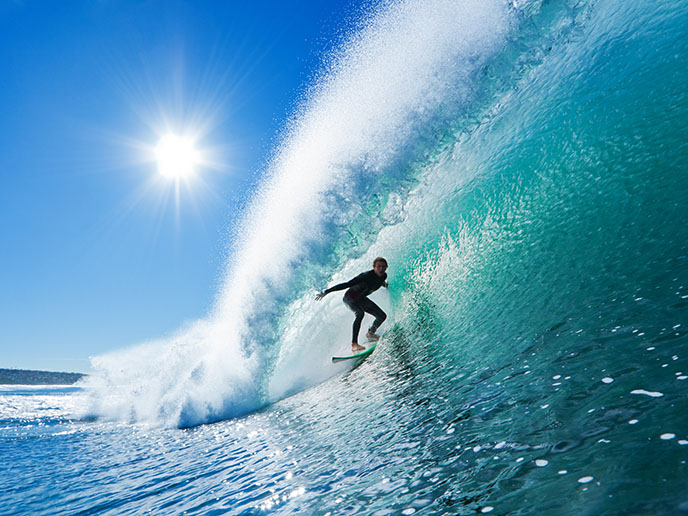New converter concepts make wave energy viable
The climate emergency and current energy security challenges have accelerated the transition away from fossil fuels, and driven innovation in renewable energy. One area of untapped potential is oceanic wave energy. “Offshore wind and solar farms are fantastic resources,” says LiftWEC(opens in new window) project coordinator Carwyn Frost from Queen’s University Belfast(opens in new window) in the United Kingdom. “If we are going to invest in offshore energy however, it also makes sense to look underneath the surface. Water is denser than air, which means that more energy is stored in water than in wind.”
Untapped potential of wave energy converters
Frost explains that ocean waves are essentially a condensed form of wind; it is the wind after all that drives and creates ocean swells. And where there are long distances between land masses – between the Americas and Europe for example – there is a higher chance of developing these swells. This dense form of energy can be captured by wave energy converters placed in the ocean. Existing technologies rely on a close coupling with the wave which results in extreme forces during storm events. “More than one commercial demonstration has failed due to this vulnerability, which has held back commercial progress and investment,” explains Frost. This is where the EU-funded LiftWEC project comes in. The concept relies on blade or wing theory much like an aeroplane or wind turbine. These underwater wings or blades interact with the rotational velocity the wave creates as it passes, causing the device to spin, somewhat similar to a wind turbine. In the event of a storm, the device could be turned off, just as a modern wind turbine can be turned off in the event of a severe weather event. This protects it from those extreme forces, which could make the design cheaper and more reliable. “This is a new design space, so it was an exciting area to explore,” adds Frost.
Robust, energy-efficient wave designs
The project began with a series of workshops, which came up with 19 device designs. These designs were then carefully examined to assess their potential energy-efficiency, cost-efficiency and sustainability. “We took the best elements from each design and came up with four primary devices,” says Frost. “Interestingly, all four devices featured the same rotor design – the differences were in structure and the manner of deployment.” Numerical and analytical modelling were carried out, and marine conditions recreated in the lab. These experiments began with regular waves, before moving on to representative oceanic conditions. “The project very much took a holistic approach,” remarks Frost. “We took into account not only high performance but also survivability and environmental footprint. Most research in the past has only focused on hydrodynamics.”
Viability of rotor-driven wave converters
The potential benefits of wave energy are massive – the key has always been finding ways of effectively tapping this global, renewable resource. The importance of LiftWEC is that it has demonstrated that placing 2 MW rotor-driven wave converters in the Atlantic Ocean could be viable. While further R&D input is still needed to bring the technology towards marine trials and eventual commercialisation, a pathway forward has been forged. “At no point did we come across something that made us think that this would not work,” notes Frost. “We were able to show that – technically and economically – this new design space is certainly worth pursuing.”







